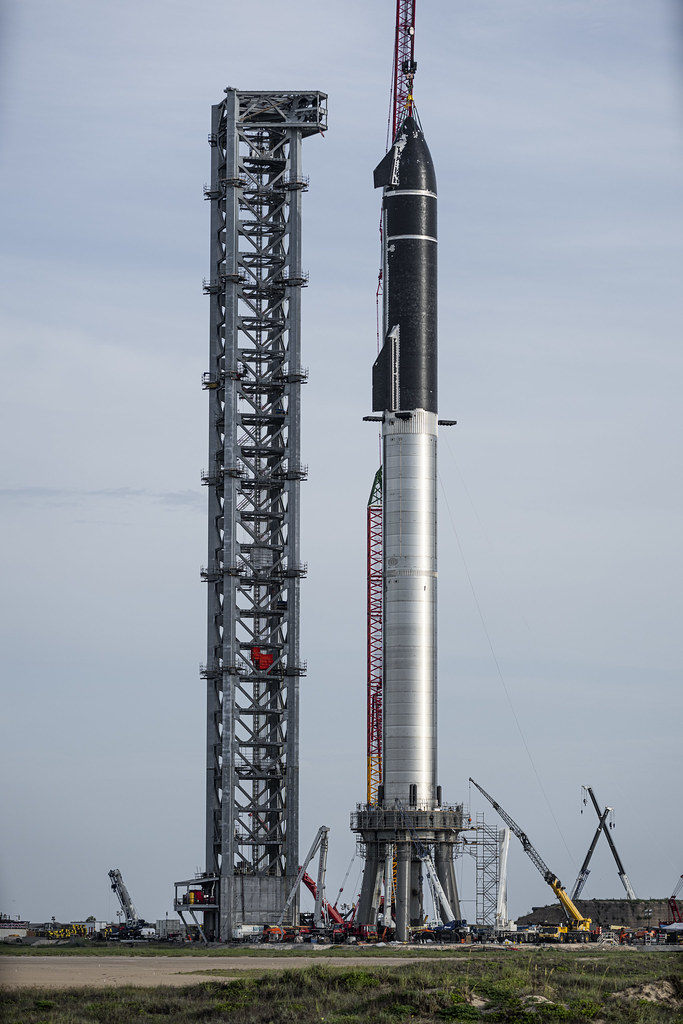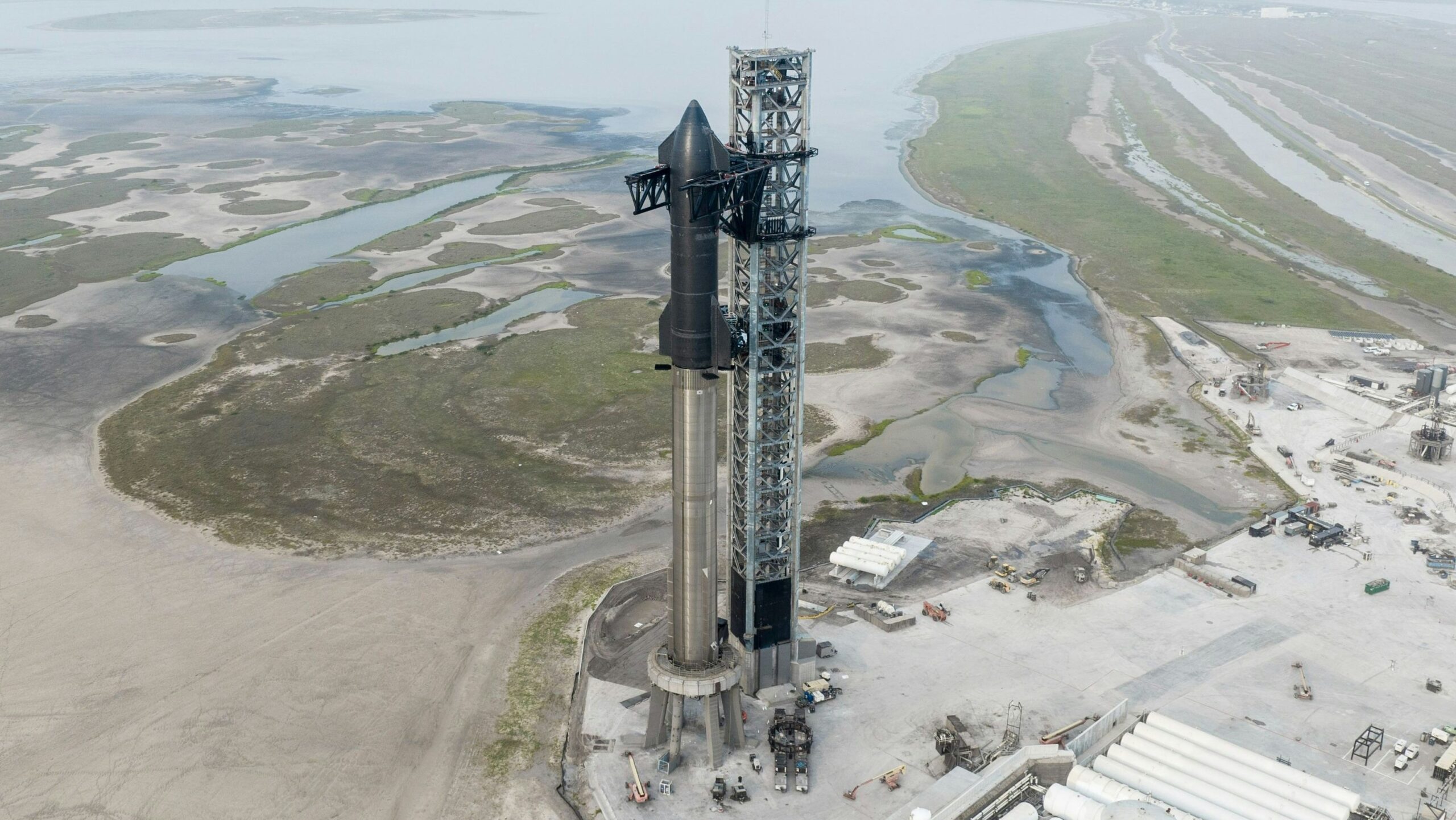There we go. After nearly three months of anticipation, the long-awaited Starship Flight 10 is finally within reach. But don’t be fooled—this is not just another routine test flight. It represents a major leap forward for SpaceX, setting the foundation for critical Starship operations by the end of 2025.
With Elon Musk publicly confirming the timeline, every second, every maneuver, and every system check matters. Let’s dive into why Flight 10 could become one of the most important test missions ever.
Starship Flight 10: The Countdown Begins
Why Texans Are in for a Real Treat
If you’re lucky enough to live in Texas, especially near Boca Chica or South Padre Island, you’re in for a front-row seat to space history.
Mark your calendar for Sunday at 6:30 PM. That’s when Flight 10 is set to launch, and South Padre Island remains the top recommendation for viewing. It’s the best spot to witness 121 meters of cutting-edge rocket technology roar to life from Starbase.
Expect the ground to tremble under the sound of 33 Raptor engines firing simultaneously. The low-frequency rumble mixed with sharp crackling from supersonic shockwaves is something you’ll feel in your bones.
Can’t make it in person? No worries. SpaceX will be livestreaming the entire event via their official YouTube channel at 6:00 PM. With millions of viewers tuning in, you’re still part of the action.

Starbase Activity: Everything is on Track
Booster 16 and Ship 37 Are Ready
At Starbase, things are moving fast. Booster 16 (B16) was transported from the Rocket Garden to Pad 1, where it was lifted onto the orbital launch mount using the Mechazilla arms. It’s now standing tall, awaiting the arrival of Ship 37.
While most of us were sleeping, engineers were hard at work. Ship 37 was placed on its transport stand, and eight dummy satellites were loaded into its cargo bay—all in just two hours.
A road closure notice confirmed the ship’s scheduled rollout between 4:00 PM and 10:00 PM, setting the stage for final preparations.
With both B16 and Ship 37 prepped and stacked, SpaceX is checking off every box, from engine alignment to avionics verification, ensuring a flawless launch window.
The Technical Timeline: What to Expect Before Liftoff
Once the stacking is complete, SpaceX engineers will perform an exhaustive inspection of the fully assembled rocket. This includes:
- Alignment of both stages
- Verification of communication systems
- Hooking up the BQD and SQD (propellant systems)
- Preparing for full propellant loading
Fueling Process
Expect fueling to begin around 5:00 PM—just 90 minutes before liftoff. SpaceX will load:
- 4,900 tons of Liquid Oxygen (LOX)
- Liquid Methane (CH4)
Thanks to an upgraded tank farm pump, fueling now takes less than one hour, which is impressive considering the scale.

Before full fueling, engineers run a pre-chill sequence—cooling down the fuel lines, turbo pumps, and engine chambers to cryogenic temps. This process is crucial for engine ignition stability, preventing cavitation and thermal shock.
What Happens During Flight 10?
Super Heavy Booster’s High-Risk Maneuvers
Let’s be real: the Super Heavy booster might not make it back in one piece.
The FAA has issued a NOTAM (Notice to Air Missions), blocking airspace from August 24–29, aligning perfectly with Flight 10’s launch window.
Here’s the planned sequence:
- Liftoff
- Stage separation
- 180° flip for landing orientation
- Boost-back burn
- Landing burn using 2 engines
After hot-staging, B16 will perform a controlled descent, slowing itself by increasing aerodynamic drag.
But the real test lies in the landing burn. SpaceX will attempt a first-of-its-kind two-engine landing, where one of the three central engines is intentionally shut off. The system will rely on a backup engine from the inner ring to complete the descent.
If this works, Super Heavy could hover and land over water with just two engines, a monumental step toward future tower catches.
Can Ship 37 Survive the Heat of Re-entry?
After B16’s performance, attention turns to Ship 37, which carries its own list of bold experiments.
This time, no return to the launch site is planned. Instead, Ship 37 will splash down in the ocean, providing critical re-entry and recovery data.
But don’t think for a second this is a passive mission. Here’s what Ship 37 is set to test:
1. Engine Restart in Space
Ship 37 will attempt to restart one vacuum engine in orbit, an essential step for orbital maneuvering and future missions to the Moon or Mars.

2. Heat Shield Experiments
SpaceX has:
- Deliberately removed several tiles in high-stress zones
- Installed experimental metal tiles
- Activated a new cooling system
The goal? Test new materials and configurations to improve heat resistance during re-entry at orbital velocity.
3. Mock Catch Points
Catch hooks have been added to simulate Mechazilla recovery systems. They’re still protected by tiles, but these fittings will provide insights on structural resilience under heat and pressure.
Starlink Deployment: Suborbital Milestone
Ship 37 is also tasked with deploying eight Mach Starlink satellites at suborbital altitude. These aren’t operational but are mock payloads intended to validate Starship’s internal deployment system.
Deployment Timeline:
- T + 18:27 – Begins at 190 km altitude
- T + 25:00 – Ends just before atmospheric re-entry
This will test how effectively Starship can deploy payloads in future commercial missions.
Final Maneuver: Controlled Ocean Splashdown
At T + 1 hour, 6 minutes, 14 seconds, Ship 37 will attempt a controlled landing flip, descending to just 1–2 km above the ocean.
At that moment:
- Engines will ignite to rotate the ship upright
- Final descent ends in a splashdown
- Recovery ships will retrieve the vehicle for inspection
Engineers will assess:
- Heat shield damage
- New metal tile performance
- Payload bay status
- Vacuum engine performance
Why Flight 10 Is a Defining Moment for SpaceX
Flight 10 isn’t just a test—it’s a full demonstration of SpaceX’s rapid reusability roadmap. Every piece of data brings the team closer to catching rockets mid-air and eventually making fully reusable space systems a reality.

If Flight 10 Succeeds:
- Flight 11 could attempt the first full tower catch
- Mechazilla becomes a fully operational landing system
- Starship Version 3 development accelerates
If Flight 10 Fails:
- Tower catch attempts may be delayed to 2026
- Reusability goals shift further down the timeline
- More static fire and ground-based data will be needed
But either way, Flight 10 is packed with data-driven objectives, each inching SpaceX closer to humanity’s next chapter in space exploration.
Elon Musk’s Role: The Big Announcement
Elon Musk has teased a technical update on Starship, scheduled for release after Sunday’s launch. Speculation suggests it could be:
- An overview of Starship V3
- Updates on Moon or Mars timelines
- New strategies for reusability and heat protection
This announcement could shed light on SpaceX’s full vision for the 2026 Mars mission window.
Conclusion: Flight 10’s Legacy Begins Now
Starship Flight 10 is more than just another test—it’s a symbol of SpaceX’s ambition to rewrite the rules of space travel.
From two-engine landing burns, to experimental heat shields and payload deployment, every risk is a step toward a multi-planetary future.
Whether you’re watching from South Padre Island or tuning in from around the world, know this: you’re witnessing history in the making.
So let’s all get ready. Because on Sunday at 6:30 PM, a giant steel spacecraft will rise into the sky, and with it, humanity’s hopes of exploring the stars.
Drop a “Victory for All” in the comments below if you believe SpaceX will pull off this incredible mission.
FAQs
1. What is the purpose of Starship Flight 10?
Flight 10 is a major test mission designed to demonstrate critical technologies for SpaceX’s Starship system, including engine reusability, heat shield durability, and payload deployment systems. It lays the groundwork for future orbital reentry and tower-catching capabilities.
2. When is Starship Flight 10 scheduled to launch?
The current launch window is set for Sunday at 6:30 PM (local time), with fueling expected to begin around 5:00 PM. The FAA has blocked airspace between August 24–29, signaling the active launch period.
3. Where can I watch the Starship Flight 10 launch?
You can watch the launch live on SpaceX’s official YouTube channel, or witness it in person from South Padre Island, Texas, the best public viewing spot near Starbase.
4. What is the significance of Booster 16 in this flight?
Booster 16 (B16) will perform several key maneuvers including hot staging, boost-back, and a two-engine landing burn test—a high-risk move critical for future reusability goals.
5. What is Ship 37 testing during Flight 10?
Ship 37 will conduct experiments involving:
- Vacuum engine restart in space
- Experimental metal heat shield tiles
- Mock tower catch points
- Suborbital Starlink payload deployment
6. Is Starship Flight 10 a full orbital mission?
No. Flight 10 is a suborbital mission, meaning it will reach high altitude but will not complete a full orbit. The primary objective is to gather re-entry and landing data.
7. Will Flight 10 attempt a Mechazilla tower catch?
No. SpaceX confirmed that a tower catch will not occur during Flight 10. However, mock components are being tested for future tower recovery efforts.
8. Why is SpaceX removing heat shield tiles on purpose?
SpaceX is intentionally removing tiles in high-heat zones to evaluate how vulnerable areas handle atmospheric re-entry, aiding in the design of stronger shields for future missions.
9. What are the Starlink satellites on this flight?
Flight 10 will deploy eight Mach Starlink dummy satellites. These are not for operational use, but for testing the payload deployment mechanisms inside Starship.
10. Will Elon Musk give an update after the launch?
Yes, Elon Musk is expected to give a technical update on Starship after the launch, possibly discussing Starship V3, future goals, and recovery strategies.
11. What is hot staging, and why is it important?
Hot staging refers to igniting the upper stage’s engines while the lower stage is still attached, helping optimize trajectory and improve fuel efficiency. It was successfully tested on Flight 9.
12. What makes the two-engine landing burn risky?
Landing a 70-meter booster using only two engines, including one from the inner ring, has never been done before. It tests control and redundancy in case of engine failure during landing.
13. What happens after Ship 37 splashes down?
After splashdown, SpaceX recovery teams will retrieve Ship 37 for inspection, focusing on:
- Heat shield wear
- Tile damage
- Engine condition
- Structural stress points
14. Could Flight 10 fail like earlier tests?
Yes, failure is always a possibility. But even if it does, SpaceX gains valuable data to improve future missions. Flight 9 had landing issues, which are being directly addressed in Flight 10.
15. How does Flight 10 prepare SpaceX for Mars missions?
By testing engine reignition, heat resistance, and landing procedures, Flight 10 provides essential data for future Mars and Moon landings, where atmospheric re-entry and long-duration missions are involved.
16. What comes after Flight 10?
If successful, Flight 11 may attempt the first full tower catch using Mechazilla. SpaceX also plans to introduce Starship Version 3, featuring next-gen engines and structural upgrades.
Read More:
- Tesla is bringing back something it took from the Model 3…for a price
- Elon Musk takes aim at Bill Gates’ Microsoft with new AI venture “Macrohard”
- SpaceX Starship Flight 10: What to expect
- Tesla launches new loaner program that owners will love
- 2026 Tesla Model 2 First Look: Elon Musk Announces INSANE Specs SHOCKING the Industry


Starship V2 is tall, and is being redesigned to be even taller.
Being so tall, how will it be stable and not tip over when landing on a soft surface, like the Moon or Mars?